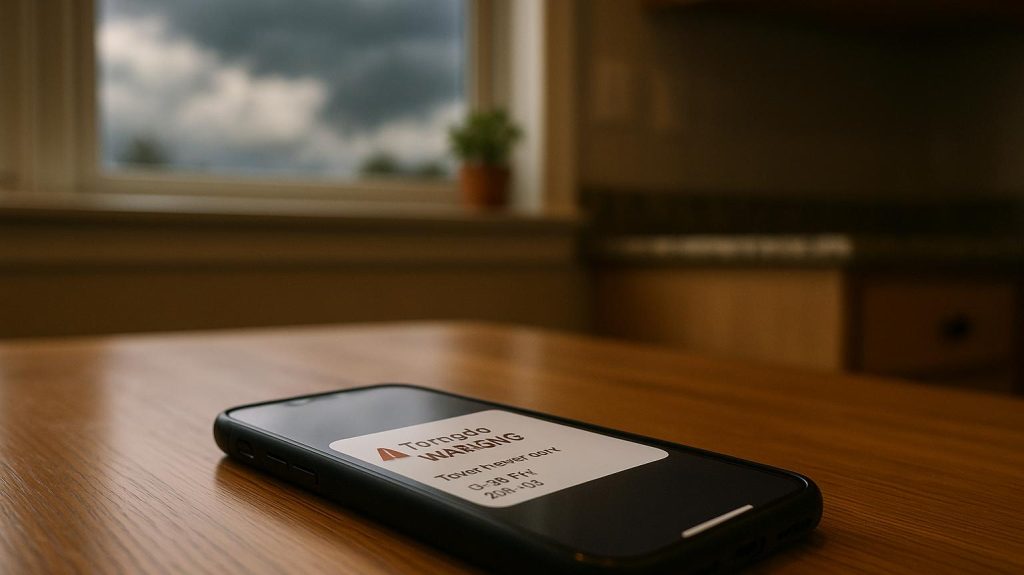Sunday evening took an unexpected turn for some London residents when their phones started buzzing with tornado warnings, while others sat completely in the dark about any potential weather emergency.
The alert situation became a proper head-scratcher when only select people received the warning to take cover immediately. One local person shared that their spouse got the alert while they received absolutely nothing on their device, creating the kind of household confusion that makes you question everything about emergency systems.
The timing of the alerts proved equally puzzling, with some residents noting the warning showed a timestamp that was already 20 minutes in the past when it arrived. Talk about fashionably late emergency notifications.
Environment Canada had issued an official tornado warning at 7:36 PM for Western Lake Erie, tracking a severe thunderstorm potentially producing a tornado. The system was located 24 kilometres southeast of Pelee Island, moving northwest at 35 knots with the potential for damaging winds up to 70 knots, large hail, and intense rainfall.
However, London itself wasn’t actually under any official tornado warning according to the Weather Network app and Environment Canada’s website. The alerts seemed to be reaching London phones due to the storm system’s proximity to Lake Erie, creating a technological mix-up that left many residents scratching their heads.
One person riding London Transit when their phone started buzzing thought they were getting a regular call, only to discover the tornado alert. After checking with fellow bus passengers, they realized they were the only one who received the notification, adding another layer to the mystery.
The inconsistent alert delivery highlighted ongoing issues with Canada’s Alert Ready system. Some families reported half their household getting the warning while others received nothing, with different carriers and phone types seeming to affect who got alerted.
Weather radar showed a significant storm system moving through southwestern Ontario, particularly affecting the Windsor area. The storm had the characteristic “hook” shape that meteorologists watch for when tracking potential tornado activity, though it remained primarily over water near Chatham.
London has experienced tornado activity before, most notably an F2 tornado that touched down in White Oaks on September 2, 1984. That tornado travelled 3.63 kilometres with a maximum width of 120 metres, causing 33 injuries and $5 million in property damage without any fatalities.
The evening’s weather ultimately proved much less dramatic than the alerts suggested for London residents. Most reported typical thunderstorm conditions with dark skies, rain, and normal wind levels rather than the severe weather the alerts implied.
This incident joins a growing list of Alert Ready system glitches that have left many people questioning the reliability of emergency notifications. Some residents mentioned not receiving recent test alerts either, creating concerns about whether they’d be properly warned during actual emergencies.
The false alarm nature of Sunday’s alerts became apparent when checking official weather sources showed no active tornado warnings for London specifically. The storm system remained primarily over Lake Erie, affecting areas closer to the water rather than London’s inland location.
Local weather enthusiasts recommended checking multiple sources during severe weather events, including Environment Canada’s official website and specialized weather apps that provide real-time radar information. The confusion highlighted how residents often rely solely on phone alerts without cross-referencing other weather information sources.
The incident sparked online discussions among locals about emergency preparedness and the importance of having backup weather information sources when phone alert systems prove unreliable.

